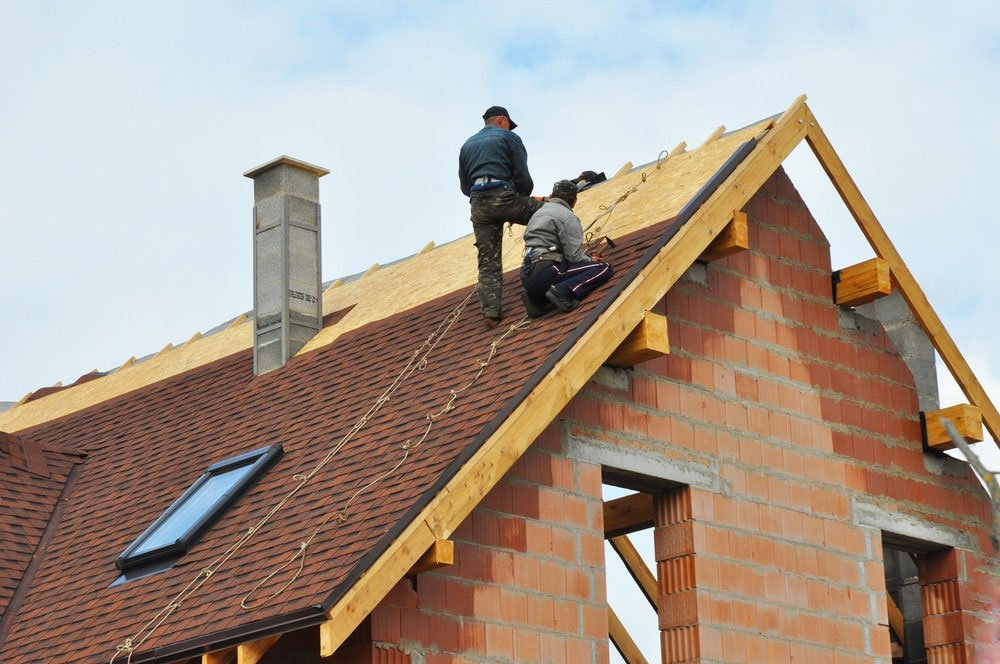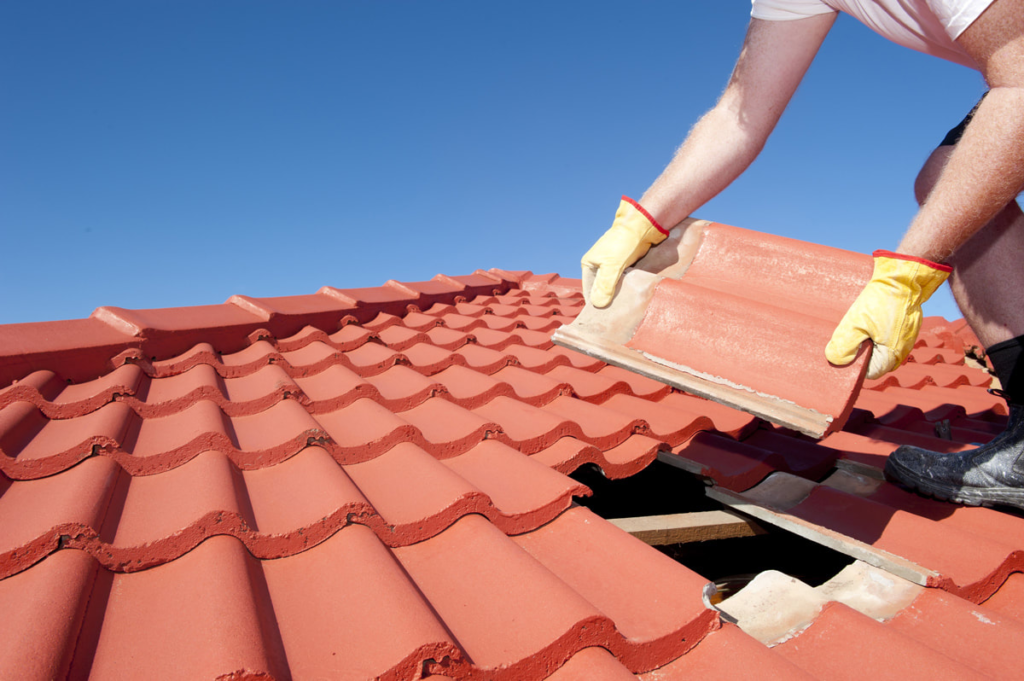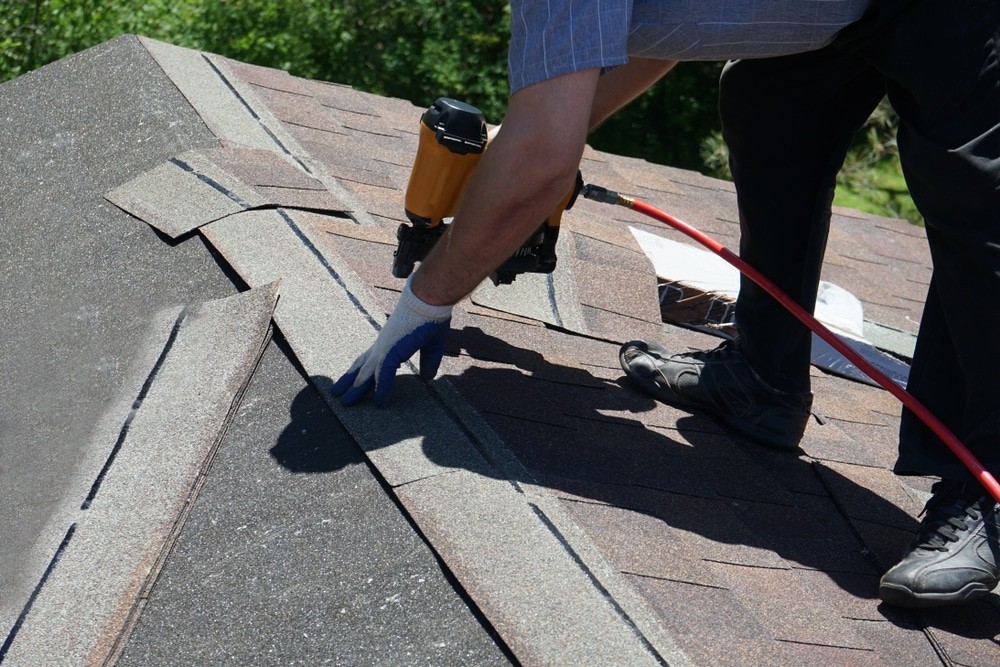There’s a certain comfort in standing beneath a solid roof, knowing you’re shielded from everything nature throws your way. But over time, even the sturdiest roofs begin to show signs of wear. These signs don’t always scream for attention—in fact, they often whisper, quietly hinting that something’s not right. Ignoring these whispers can lead to costly damage, both to your home and your peace of mind.
Let’s walk through the top 5 signs that a roof is in trouble and needs immediate repair—before a minor issue becomes a major headache.

1. Shingles That Tell a Story
The first sign usually appears in the form of curling, cracked, or missing shingles. Maybe you’ve noticed a few granules in the gutter or a patch on the roof that doesn’t quite match the rest. Shingles are like the roof’s armor, and when they start breaking down, the layers underneath become vulnerable.
Weather in Edmonton can be relentless—icy winters, windstorms, hail—and shingles bear the brunt of it all. Damaged shingles are often the first signal that the roof is asking for help.
What’s more, shingle issues rarely occur in isolation. One cracked or missing shingle can lead to others loosening or breaking away. It’s like a domino effect. And once water seeps beneath even a single damaged shingle, it can begin eroding the underlayment, leading to rot and mold growth within the roof structure itself.
A roof with worn-out shingles won’t just look tired—it will act tired, failing to protect your home from leaks, drafts, and even pests. If your shingles are curling at the edges, breaking apart, or disappearing altogether, it’s time to take action before the damage spreads.
What homeowners often overlook is the age of their shingles. Many shingles come with a lifespan of 20 to 30 years, but extreme weather and lack of maintenance can shorten that dramatically. Even if your roof looks fine from afar, a close-up inspection might reveal a different story—one of wear and impending failure.
2. Water Stains and the Mystery of the Ceiling Spots
Water stains inside the house are often misunderstood. They’re not just cosmetic blemishes—they’re signs of a roof that’s struggling. A yellow-brown spot on the ceiling might seem harmless, but it speaks volumes about what’s happening above.
Leaks often start small, silently seeping through layers, and by the time they make their presence known inside the home, the damage could be extensive. These stains are your warning: water has found a way in, and it won’t stop until the source is repaired.
But the real story of water stains goes deeper. That stain on your ceiling? It might have started from a slow drip that has been steadily damaging insulation, drywall, and wood framing for weeks—or even months. By the time you notice a spot, the underlying structure may already be compromised.
And water is a sneaky intruder. It doesn’t just fall straight down. It can travel along beams, seep into walls, and affect electrical systems. That one stain could be a sign of much larger issues hidden behind your walls and above your ceilings. Early intervention is key, and the moment you see a water mark, it’s time to trace it back to its source.
Homeowners who delay addressing water stains often find themselves facing more than just roof repairs. Mold remediation, insulation replacement, and even structural repairs can follow if water damage is left unchecked. Acting fast is not only smart—it’s cost-effective.
3. Sagging: The Silent Warning
A sagging roofline is one of the most dangerous signs. It’s subtle at first—a gentle dip, maybe, or an uneven line along the edge. But sagging indicates structural issues beneath the surface. Perhaps it’s water-logged wood, or compromised support beams struggling under years of weight and wear.
A roof should be straight and sturdy. Any sign of sagging means it’s time to act fast before gravity takes over and more damage occurs.
So why does a roof sag? Moisture is often the culprit. When water infiltrates a roof and isn’t properly drained or dried, it begins to compromise the integrity of the wooden structure. Over time, wood absorbs water, becomes heavy, and starts to warp. As the internal support weakens, the roof bows under its own weight.
The result? A ticking time bomb. What starts as a barely noticeable dip can quickly become a full-blown collapse, especially under the added weight of snow or after a heavy rainfall. Addressing a sagging roof isn’t just about aesthetics—it’s about safety.
Sagging can also be a sign of poor roof installation or subpar materials. If your roof is newer and already sagging, it might be time to evaluate the quality of the installation. Don’t let a small dip become a catastrophe—the longer it’s ignored, the more dangerous it becomes.
4. The Uninvited Guest: Mold and Moss
Moss growing on a roof might look picturesque in a fairytale sense, but in reality, it’s a red flag. Moss and mold thrive in damp environments. Their presence often indicates trapped moisture, and trapped moisture leads to rot.
What’s worse, moss can lift shingles as it grows, allowing even more water to seep in. This creates a cycle of decay that accelerates if left unchecked. When the greenery starts to take over the rooftop, it’s a clear sign the roof needs immediate attention.
Mold, in particular, is a silent destroyer. It doesn’t just attack the roof—it invades your air. Mold spores can make their way into the home, compromising air quality and posing health risks to anyone inside, especially those with allergies or respiratory conditions.
The appearance of moss or mold is like nature tapping you on the shoulder, reminding you that your roof isn’t as impervious as it once was. Cleaning alone isn’t enough. The root cause must be addressed, and often that means repairs to restore proper drainage and prevent further moisture buildup.
Moreover, the presence of moss can signal other issues such as poor attic ventilation or inadequate drainage systems. A healthy roof breathes, and when ventilation is compromised, it becomes a breeding ground for unwanted growth. Roof cleaning and treatment can help temporarily, but without fixing the core issues, the problem will return.
5. Light Where It Shouldn’t Be
Step into the attic on a sunny day. If you see light filtering through the roof boards, it’s a sign of trouble. Gaps or holes in the roofing structure allow more than just light in—they’re invitations for water, pests, and cold air.
What begins as a small beam of sunlight can quickly turn into a stream of water during the next rainstorm. And once moisture enters the attic, it doesn’t stay put—it moves, it molds, and it damages.
The attic should be dark, dry, and insulated. Light breaking through means that your roof is literally coming apart at the seams. Whether due to missing shingles, compromised flashing, or decayed wood, these openings are vulnerabilities waiting to be exploited by the elements.
Addressing these gaps quickly can mean the difference between a minor patch and a major overhaul. The next time you’re in the attic, take a moment to look up. What you see—or don’t see—could save your home.
Additionally, pests love these entry points. Squirrels, raccoons, and birds see an open gap as an invitation to nest, bringing noise, mess, and further damage. What starts as a pinhole of light can escalate into a full-blown infestation and compromise your home’s insulation and wiring.

Listen to What Your Roof Is Saying
Roofs may not speak, but they certainly communicate. The key is paying attention to the signs—before they grow louder and more expensive. Regular inspections and timely repairs are essential to preserving not just your roof, but the integrity of your entire home.
In Edmonton, where weather is unpredictable and often extreme, your roof works overtime to keep you safe. Recognizing these top 5 warning signs can save you from unexpected repairs, financial strain, and the stress of emergency fixes.
A well-maintained roof does more than just protect. It preserves the value of your home, enhances energy efficiency, and provides peace of mind. Roof repairs might not be glamorous, but they’re investments in your future comfort and security.
Let your roof do its job, and when it starts to struggle, be ready to step in. Because in the story of your home, the roof plays a leading role—one that deserves care, attention, and timely repairs.
If you haven’t had your roof inspected recently, now is the time. Proactive maintenance can help catch issues early, and save you thousands in the long run. Don’t wait for a leak or a sag to remind you—let this be your sign to give your roof the attention it needs.

